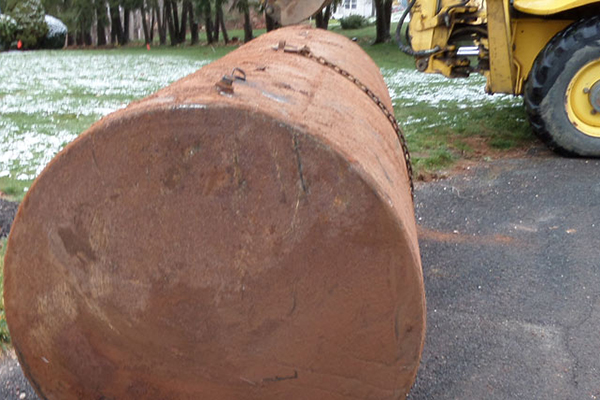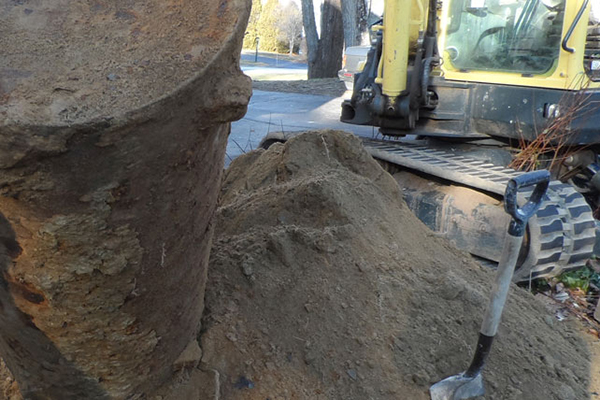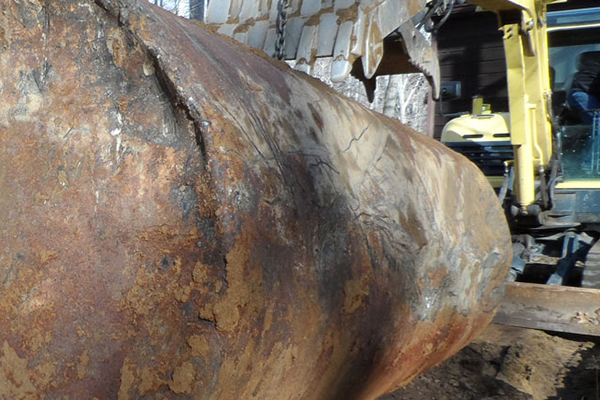
Heating Fuel Tank Removal & Installation
Heating oil tank removal has been an extremely high profile issue in the last ten years, due in part to more stringent regulations placed upon gasoline and commercial petroleum storage facilities. In addition, some homeowners’ insurance policies have required the removal of underground oil tanks in order to keep existing coverage. Real estate transactions transferring ownership of properties have also driven removals.
As many residential neighborhoods approach the 20 to 30 year mark, large numbers of heating oil tanks are reaching the end of their life expectancy. Service Station Equipment, Inc. provides comprehensive services for all types of residential and commercial storage systems and offers services to specifically address the needs of homeowners requiring tank installation, replacement, removal and precision testing.
REMOVAL
The closure of an underground heating oil tank is commonly done through excavation and removal. The following are the common steps for tank removal:
- A Service Station Equipment representative will visit your home at no cost, to assess work required to excavate/remove the tank and prepare a detailed cost proposal outlining the steps involved.
- As required by law, 72 hours prior to excavation, the site will be inspected for any potential publicly owned underground utilities, by Call Before You Dig (CYBD) and if found their location will be marked with color coded spray paint; electric (red), sewer (green) Water (Blue), Gas (Yellow) Cable/Telephone (Orange)
- Permits and/or Fire Marshal approvals will be gained.
- Service Station Equipment will remove remaining liquids (Oil or Water) via pump. Any residual sludge/waste liquids will be disposed of properly.
- A full size backhoe will excavate the area over the tank and remove the tank from the ground.
- Oil lines will be sealed and capped or removed to the building wall.
- Soil samples from the excavation will be taken and transported to a State of Connecticut certified lab for analysis. ETPH (Extractable Total Petroleum Hydrocarbons) is the normal analysis utilized with a normal 10 working day turn-around.
- Any site inspections, if required, by either the local Fire Marshal or Building Official will be scheduled at this time.
- Old tank will be disposed of properly.
- The tank grave will be back-filled with clean gravel to rough grade. Top soil will be placed on the surface, graded, raked and seeded.


TANK INSTALLATION
There are currently many misunderstandings about the allowance of installation of new underground storage tanks. Residential oil tanks used solely for heating under the capacity of 2100 gallons are unregulated by the State of Connecticut. However, each of Connecticut’s 169 towns has the ability to enact their own regulations on underground heating fuel tanks. Most still allow underground tanks to be installed, however stricter guidelines are usually applied circumstantially based upon factors such as groundwater aquifers and other topographical and geological factors.
There are only two tank technologies that are allowed by most towns. One is a cathodically protected steel tank (STIP3) the other is a fiberglass tank.
A cathodically protected steel tank has magnesium (or zinc) anodes attached to the tank and electrical leads to the surface allowing the owner the ability to check the effectiveness of the cathodic system. These anodes are known as sacrificial anodes because they are meant to give up electrons to the surrounding soils in lieu of the steel in the tank giving up electrons. This process of giving up electrons is commonly known as corrosion. BARE STEEL TANKS WITH ASPHALTIC COATING ARE NOT ALLOWED TO BE BURIED IN CONNECTICUT.
Fiber glass tanks are also allowed, although they are more costly and more difficult to install.
In either case, double walled tanks should be considered and are mandatory if tank is to be installed within 50’ of a water well.
INDOOR TANK INSTALLATION
There are dozens of configurations of indoor tanks available to fit the needs of different types of building structures. The common ones consist of either 275 gallon tanks or 330 gallon tanks. These are rather thin, oval shaped tanks that provide safe and economical indoor storage.
Most towns allow for tandem installations doubling capacity to either 550 or 660 gallons. Tanks are installed by licensed heating installers in accordance to current BOCA mechanical code guidelines. Tanks are inspected and pressure tested to insure leak-free installations.

Home » Heating Fuel Tanks
